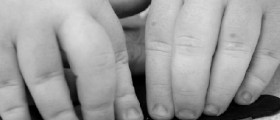
Dyslexia has been present with people for a very long time and the records of first occurrences of this condition were recorded decades ago. Dyslexia is defined as a learning disability, preventing children or adults from reading, spelling, writing and sometimes speaking correctly. There are different degrees of dyslexia and it is best to be treated at the youngest age, as soon as it appears. However, even adults with dyslexia can be successfully treated.
Dyslexia usually has nothing to do with the child's intellect. Rather, even children who otherwise perform well in school, paying attention and giving positive feedback, can be dyslexic. Thus, dyslexia is triggered by a specific brain impairment, making it hard for individuals to translate specific images or sounds received into language. Yet, this has nothing to do with brain damage, retardation or lack of intelligence.
Reasons behind Dyslexia
Many times, teachers and parents do not notice dyslexia in a child and this condition continues to bother an individual making it harder to deal with later. Nevertheless, the bothered child may also be prone to depression and low self-esteem. Additionally, low performance in school may be a product of dyslexia itself.
One of the rarest types of dyslexia is trauma dyslexia. It appears due to a trauma in the head, damaging the reading and writing areas of the brain. Secondly, we have primary dyslexia, which manifests through dysfunctional left part of a person's brain, not developing with age. Dyslexic people suffering from this kind of learning disorder struggle with reading, writing, spelling and sometimes speaking,and usually are not capable of reaching above 4th grade level of these skills.
Secondary dyslexia strikes during hormonal development of the fetus. This dyslexia is more common with boys and disappears as the child reaches maturity.
Also, different types of dyslexia exist, based on the aspect of learning impairment. Visual dyslexia makes it hard for sufferers to put down specific sequences of symbols. Auditory dyslexia, on the other hand, manifests through difficulties in hearing groups of letters or a specific letter, making the child hear only scrambled sounds, making no sense out of it. Finally, dysgraphia is a type of dyslexia where the child is incapable of holding the pencil correctly and writing down letters.
Diagnosis and Treatment
A series of tests are necessary to be done in order for dyslexia to be diagnosed. Psychologists and other professionals of this medical branch can conduct these tests, paying attention to what is triggering dyslexia in a child and how it manifests. The test make it possible for professionals to see which aspect of language is difficult for the child to grasp and where the problems with receiving and reading information lie.
These tests are very reliable. Nevertheless, before doing the test, the child should have enough sleep and have a good breakfast. The test can be done with the teacher, in a classroom. Yet, parents are not recommended to be present.

















Your thoughts on this
Loading...